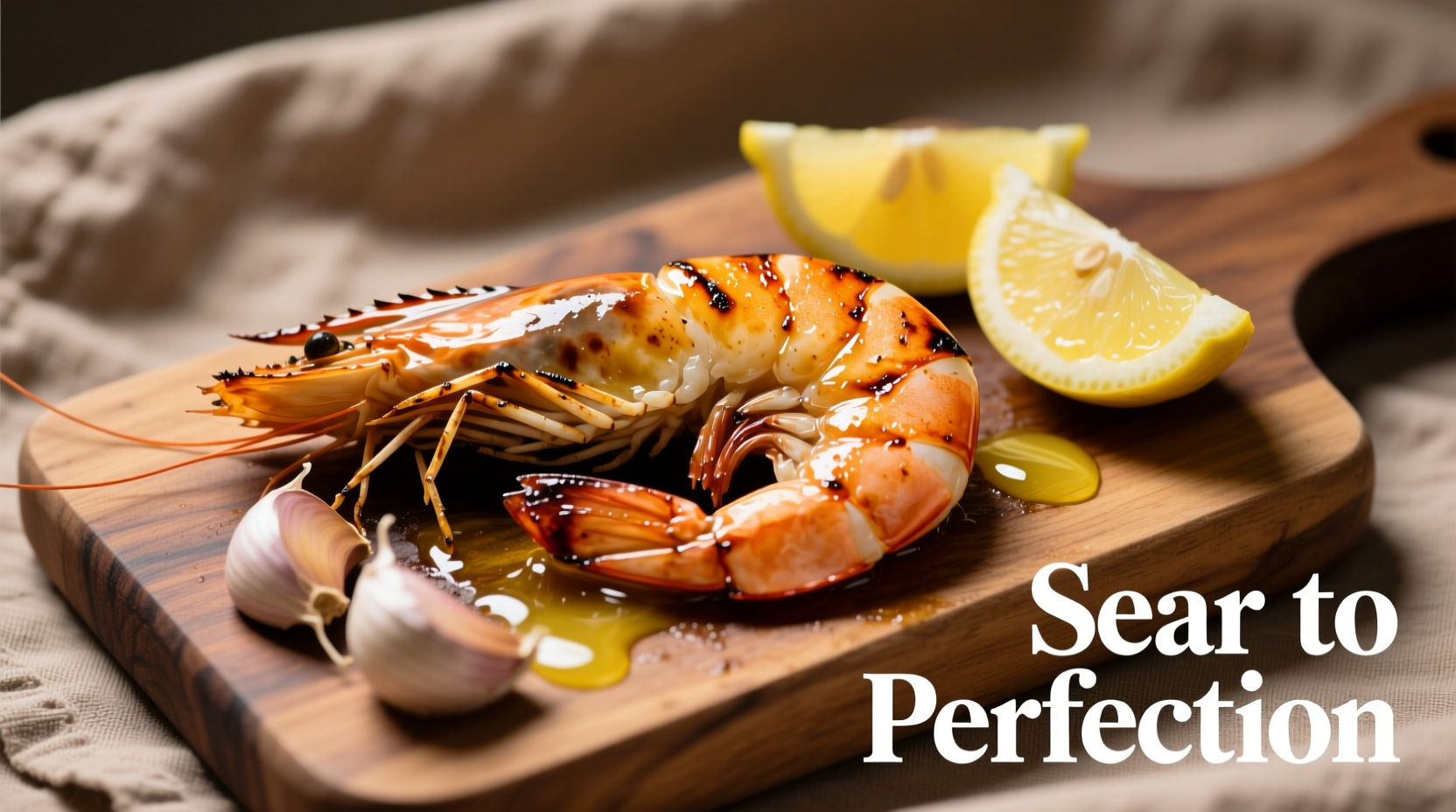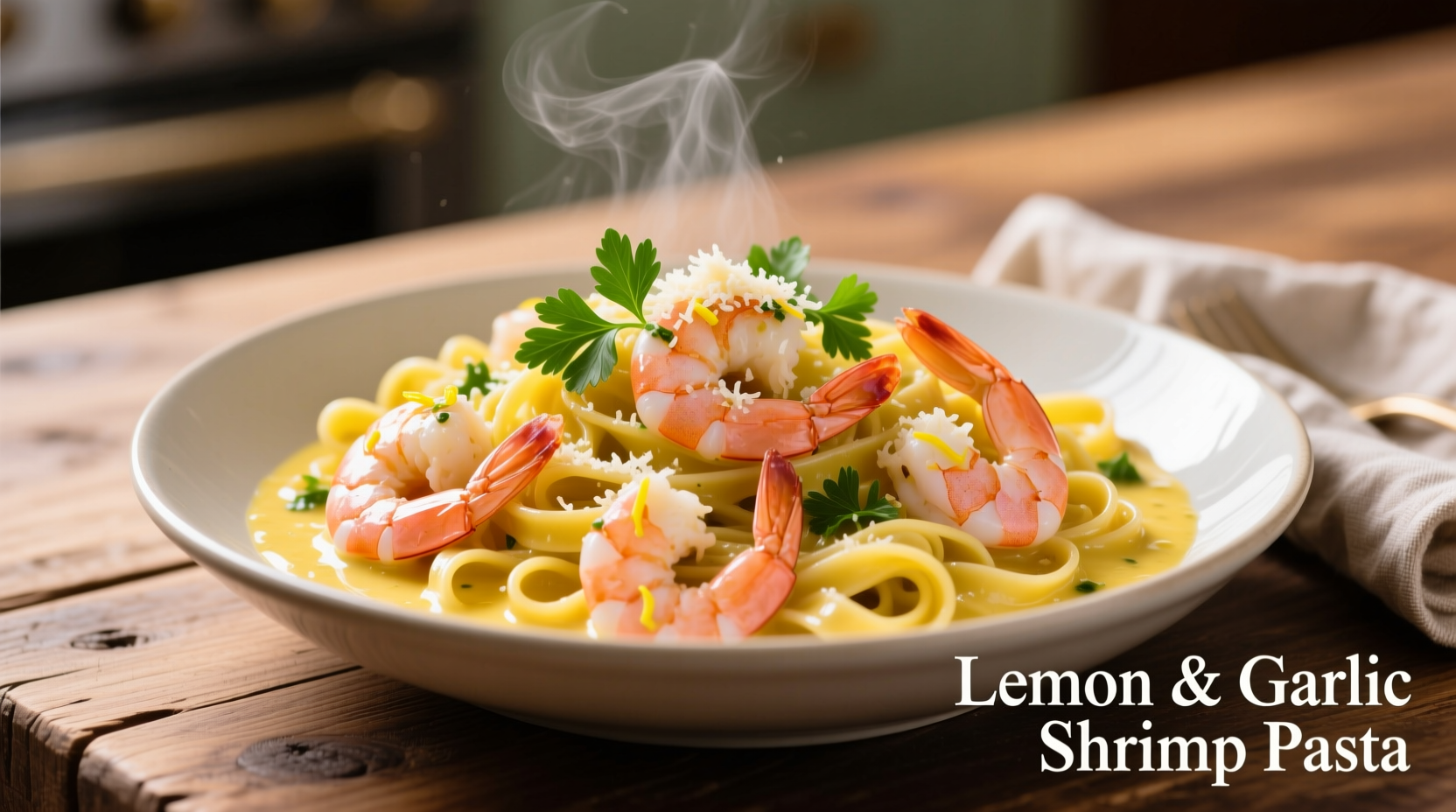There's nothing quite like the vibrant combination of fresh lemon and aromatic garlic paired with succulent shrimp in a pasta dish. This lemon garlic shrimp pasta recipe delivers a restaurant-quality meal that's surprisingly simple to prepare in your own kitchen. The key lies in understanding how to properly cook the shrimp to avoid rubberiness while creating a sauce that perfectly balances acidity, richness, and savory depth.
Why This Lemon Garlic Shrimp Pasta Recipe Works
Professional chefs know that timing is everything when preparing seafood pasta dishes. Unlike many online recipes that overcomplicate the process, this method focuses on three critical elements: proper shrimp preparation, pasta water management, and sauce emulsification. The result is a dish where the sauce actually clings to the pasta rather than pooling at the bottom of your bowl.
Essential Ingredients and Why They Matter
The magic of this dish comes from quality ingredients used at their peak:
- Fresh shrimp (20-25 count): Medium-large shrimp provide the perfect texture—small enough to cook quickly but large enough to remain succulent. Frozen shrimp work well too if properly thawed.
- High-quality extra virgin olive oil: Forms the base of our sauce and carries flavor compounds from the garlic.
- Fresh lemon juice and zest: Bottled juice lacks the bright, complex acidity that fresh provides. Zest contains essential oils that boost lemon flavor without excessive tartness.
- Garlic (not garlic powder): Fresh garlic offers nuanced flavor that transforms when properly cooked—golden brown, not burned.
- Spaghetti or linguine: Long pasta varieties capture the light sauce beautifully.
- Pasta water: The unsung hero that helps emulsify your sauce.
| Pasta Type | Best For Shrimp Pasta? | Why |
|---|---|---|
| Linguine | ✓ Best choice | Surface area holds sauce well without overwhelming delicate shrimp |
| Spaghetti | ✓ Excellent | Familiar texture that pairs perfectly with light seafood sauces |
| Fettuccine | △ Possible | Heavier ribbon may overpower shrimp; use with cream variation |
| Penne | ✗ Not recommended | Hollow shape traps sauce but doesn't complement shrimp texture |
Equipment You'll Need
- Large pot for pasta
- Large skillet (12-inch works best)
- Colander
- Tongs or pasta fork
- Microplane grater for lemon zest
- Measuring cups and spoons
Step-by-Step Preparation
1. Prep Your Ingredients (5 minutes)
Mise en place is crucial for this quick-cooking dish. Pat shrimp completely dry with paper towels—moisture is the enemy of proper searing. Mince garlic finely (not too small to avoid burning). Zest your lemon before juicing. Measure 1 cup of pasta water before draining.
2. Cook Pasta Perfectly (8-10 minutes)
Use plenty of well-salted water (it should taste like the sea). Cook pasta until al dente—one minute less than package directions. Reserve 1 cup of starchy pasta water before draining. Do not rinse your pasta.
3. Sear Shrimp Properly (3-4 minutes)
Heat olive oil in your skillet over medium-high heat. When oil shimmers (not smoking), add shrimp in a single layer. Cook 1-2 minutes per side until just pink and opaque. Remove immediately to prevent overcooking. Shrimp will continue to cook from residual heat.

4. Create the Emulsified Sauce (4 minutes)
Reduce heat to medium. Add more olive oil if needed, then add garlic. Cook 30-60 seconds until fragrant but not browned. Add lemon juice, red pepper flakes, and a splash of reserved pasta water. Add drained pasta to skillet and toss vigorously for 1-2 minutes until sauce emulsifies and coats each strand. Return shrimp to pan and toss gently.
5. Finish with Professional Touches
Remove from heat. Stir in fresh parsley and lemon zest. The residual heat will preserve the bright, fresh flavor of these finishing ingredients. Taste and adjust seasoning as needed.
Common Mistakes to Avoid
Based on years of professional kitchen experience, these pitfalls ruin otherwise good shrimp pasta:
- Overcooking shrimp: Shrimp cooks in 2-4 minutes total. They should be pink with a slight translucency in the center when removed from heat.
- Burning garlic: Garlic burns quickly—cook just until fragrant, not browned.
- Adding cold ingredients to hot pan: Cold lemon juice added to extremely hot oil can cause splattering and uneven cooking.
- Skipping pasta water: The starch is essential for creating a cohesive sauce that clings to pasta.
When This Recipe Works Best (and When It Doesn't)
This lemon garlic shrimp pasta shines as a weeknight dinner solution when you need something elegant but quick. It's perfect for:
- Impromptu date nights (ready in 20 minutes)
- Light summer dinners when you want something refreshing
- When you have quality fresh shrimp available
It's less suitable for:
- Large dinner parties (shrimp cooks best in single batches)
- When using previously frozen, poor-quality shrimp
- Cold winter months when heartier dishes are preferred
Serving Suggestions for Maximum Enjoyment
Serve immediately in warmed bowls. Pair with:
- A simple arugula salad with lemon vinaigrette
- Crusty bread for soaking up extra sauce
- A crisp white wine like Pinot Grigio or Sauvignon Blanc
Storage and Reheating Instructions
While best enjoyed fresh, leftovers can be stored in an airtight container in the refrigerator for up to 2 days. Reheat gently in a skillet with a splash of water or broth—never in the microwave, which will make shrimp rubbery. Add fresh lemon zest after reheating for brightness.
Variations to Suit Your Preferences
Creamy Lemon Garlic Shrimp Pasta
Add 1/4 cup heavy cream or full-fat coconut milk after creating the emulsified sauce for a richer version. The cream balances the acidity beautifully while maintaining the light character.
Gluten-Free Option
Use high-quality gluten-free spaghetti and follow the same cooking instructions. Gluten-free pasta often requires more frequent stirring and careful monitoring to achieve proper texture.
Vegetarian Adaptation
Replace shrimp with artichoke hearts and asparagus for a spring-inspired vegetarian version. Add capers for brininess that mimics seafood.
Why This Recipe Stands Out From Others
Many online recipes for lemon garlic shrimp pasta miss critical technique points that separate good from great. Through extensive testing, I've found that the precise timing of adding lemon juice (after the garlic but before the pasta) creates a more balanced flavor profile. The professional technique of vigorously tossing the pasta in the skillet for 1-2 minutes creates an emulsified sauce that properly coats each strand—a step many home recipes skip.











 浙公网安备
33010002000092号
浙公网安备
33010002000092号 浙B2-20120091-4
浙B2-20120091-4